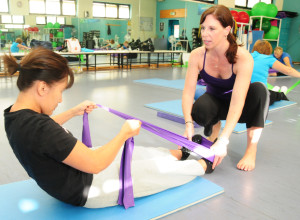According to the Bureau of Labor Statistics, tendonitis causes more than 70,000 people to miss work per year. This is just one of many reasons why it is important to understand the symptoms of tendonitis so that you can avoid not only the pain but the inconvenience it...
LATEST BLOGS
Husband and Wife of 54 Years Undergo Joint Replacement Surgeries On The Same Day
Premier Orthopaedics surgeon, Dr. Jonathan Garino, performed back-to-back procedures on a couple who have been married for 54 years! They shared their same-day surgery journey at the MUVE Center with @6ABC. Watch the incredible story below. Read the full ABC6 story...
What are Non-Surgical Treatment Options for a Herniated Disc
The spine consists of 26 bones called vertebrae and between them are cushion-like pads called “intervertebral discs”. The discs serve as shock absorbers for the vertebrae and help provide stability to the spine. When one of these intervertebral discs loses its normal...
Spinal Arthritis and Non Operative Treatment Methods

The spine is one of the most important parts of the body because it allows you to stand, bend, and move while also protecting the spinal cord. Unfortunately, our spine becomes susceptible to arthritis as we age. There are several types of arthritis, but they all cause debilitating joint pain. While there’s no sure way to prevent arthritis from occurring, there are non-operative treatment methods that can help you deal with your pain and continue to live a healthy lifestyle.
Spinal Arthritis
Arthritis develops in the facet joints that are located in between the vertebrae of the spine, and can be found anywhere from the neck to the lower back. Pain occurs when the cartilage lining of the joint wears away and causes inflammation.
Symptoms
If you’re dealing with any of the following symptoms, it’s important to contact a doctor and consider your treatment options immediately. Your arthritis pain won’t go away on its own, and if it worsens, it could lead to serious damage in your joints. Be sure to call your doctor at the first sign of pain.
- Swelling and warmth in one or more joints
- Tenderness of the joint when pressure is applied to the spine
- Steady pain in one or more joints
- Inability to bend or move
- Abnormal curve of the spine
- Pinching, tingling, or numbness in the spine
- Increased pain with movement
Diagnosis
Your physician will perform a series of tests to determine whether you have spinal arthritis. He or she will consider your medical history, perform a physical examination, and evaluate your symptoms.
During a physical exam, the physician will pay attention to your overall health, nerve function, reflexes, and the joints in the back. He or she will also look at your muscle strength and flexibility. X-rays may also be taken to see if there is cartilage loss and bone damage.
Non-Operative Treatment Options
After evaluating your symptoms and performing the necessary medical tests, your physician will determine what treatment options are best for you. The following will help explain the most common treatment options available.
Exercise – Working with your doctor to develop an exercise program that incorporates low-impact movements and stretching will help you maintain the full range of motion in your spine. Keeping joints mobile will reduce pain and keep them healthy.
Medication – Over-the-counter medication will help alleviate pain temporarily, reduce inflammation, and also reduce stiffness.
Heat/Cold Therapy – Heating pads, warm towels, or a hot bath or shower typically relieve pain and stiffness for some people, while others find ice packs to be more helpful. Using a combination of the two, heat followed by cold, can also be beneficial.
If several non-operative treatments have not been helpful in relieving your pain, your physician may suggest that it’s time to explore your surgical options. For more information on spine and back surgery, download our e-book, The Patient’s Manual to Spine and Back Surgery. This educational guide will answer any questions you have about spinal injuries and surgical procedures so you can be as informed and prepared as possible.


